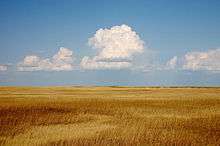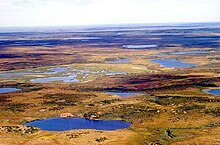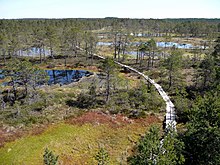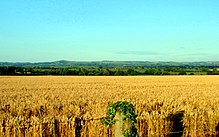Landscape
– Types of Landscapes:
– Prairie
– Tropical rainforest
– Tundra
– Taiga (boreal forest)
– Savanna
– Diverse Land Features:
– Badlands National Park, South Dakota
– Fatu Hiva Island, Marquesas Islands, French Polynesia
– Siberian tundra
– Alaskan taiga
– Rainshadow region of Tirunelveli, India
– Unique Natural Environments:
– Lahemaa National Park in Estonia
– Aletsch Glacier in the Swiss Alps
– Large fields of modern farmland in Dorset, England
– Components of a Landscape:
– Geophysically defined landforms
– Water bodies like rivers, lakes, ponds, and the sea
– Living elements of land cover including indigenous vegetation
– Human elements like different forms of land use, buildings, and structures
– Transitory elements such as lighting and weather conditions
– Definition of Landscape:
– Visible features of an area of land
– Integration of landforms with natural or human-made features
– Considered in terms of aesthetic appeal
– Includes physical and living elements, human elements, and transitory elements
– Combination of physical origins and cultural overlay of human influence
A landscape is the visible features of an area of land, its landforms, and how they integrate with natural or human-made features, often considered in terms of their aesthetic appeal. A landscape includes the physical elements of geophysically defined landforms such as mountains, hills, water bodies such as rivers, lakes, ponds and the sea, living elements of land cover including indigenous vegetation, human elements including different forms of land use, buildings, and structures, and transitory elements such as lighting and weather conditions. Combining both their physical origins and the cultural overlay of human presence, often created over millennia, landscapes reflect a living synthesis of people and place that is vital to local and national identity.
The character of a landscape helps define the self-image of the people who inhabit it and a sense of place that differentiates one region from other regions. It is the dynamic backdrop to people's lives. Landscape can be as varied as farmland, a landscape park or wilderness. The Earth has a vast range of landscapes including the icy landscapes of polar regions, mountainous landscapes, vast arid desert landscapes, islands, and coastal landscapes, densely forested or wooded landscapes including past boreal forests and tropical rainforests and agricultural landscapes of temperate and tropical regions. The activity of modifying the visible features of an area of land is referred to as landscaping.








